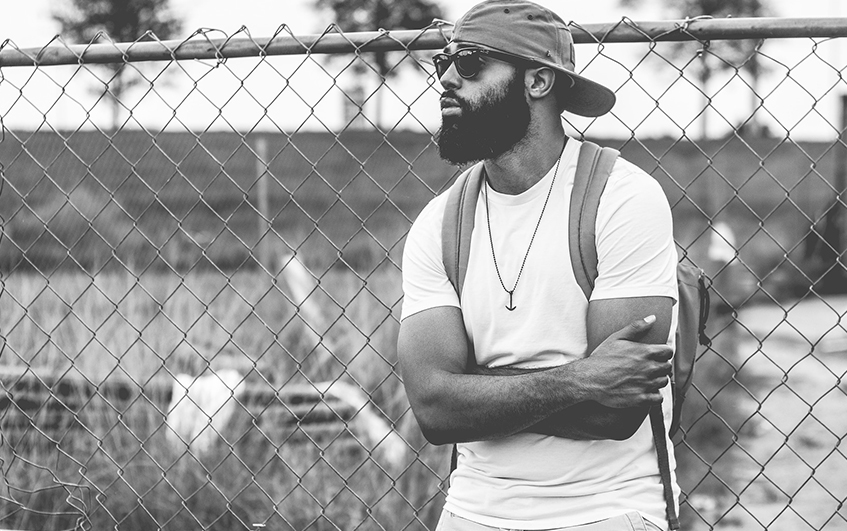Which sunglasses tint is best?
Sunglasses are not just fashion accessories, their main job is to protect the eyes from sunlight, which can be very harmful to the retina. There are different filter categories, but also different shades that can affect the ability to protect your eyes.
How to choose your sunglasses
For optimal protection, two criteria must be taken into account: the
filter category and the color of the glasses. The filter category consists of 5 protection levels, from 0 to 4, which filter the UV rays stronger or weaker depending on the level. The color tone can also play a role here. To simplify: Sunglasses with very light lenses mostly have the protection index 0 and darker lenses mostly offer the index 3.
The color tone therefore plays an important role in protecting against glare and the filter category filters and removes ultraviolet UVA and UVB radiation. Depending on the filter categories, 15 to 89% of the harmful light is filtered out.
Basically:
-> For purely aesthetic use, we recommend filter category 1.
-> Category 2 for minimal sunshine.
-> Protection level 3 is recommended for a sunny environment and level 4 is recommended for extremely strong sunshine such as at sea or high mountains. Please note briefly that these glasses are not suitable for driving, because they are too dark.
Depending on your needs, you can choose a model that is purely aesthetic or protects your eyes from radiation in the open sea or in the mountains. However, to protect your eyes well, it is better to choose glasses with index 3 that are quite dark.
How do you make sunglasses?
No secret, sunglasses are glasses with tinted UV lenses. To color an organic lens, the principle is simple: you have to dip it in a colored solution, then add the desired pigments and mix with a glass paste. Then either a mirror or a gradient effect can be added.
It is possible to find glasses in different colors, from the simplest to the most original. So we can choose gray lenses, a very elegant or mysterious brown color, or even pink or blue, or something completely original.
Conclusion: sunglasses block ultraviolet light - invisible light - which can damage the retina. You should also protect yourself from visible light to minimize glare. Color plays a crucial role in this.

Which glass color protects best?
There are different shades with which the lenses of sunglasses are colored. If you've tried different glass colors before, you may have found that some are more convenient for you than others. It is possible to choose according to various criteria. We can therefore choose a specific shade that corresponds to certain visual problems. You can also choose the color based on activity or taste.
It is important to note that the color of the glass is not the only attribute for eye protection. The material of the glass and the treatments it goes through also play an important role. And even if each shade has certain properties we'll discuss, the National Association for the Improvement of Sight recommends trying the different colors to find out which one works best for them.
Light or dark colors?
There are three shades that correspond to the filtration levels. A 65% grade (Category 2) is perfect for subdued sunlight. Tinted glasses with a shade of 85% are perfect for more sunshine and correspond to category 3 glasses.
Which color is best for my vision disorder?
-> Depending on the peculiarities of the individual lens colors, you can adapt your sunglasses to your vision problems. Therefore, dark shades such as brown are preferred for nearsightedness. They offer excellent comfort and emphasize the contrasts and details of the objects viewed.
-> Hyperopics and Astigmata offer your eyes more comfort with shades of gray. This shade offers excellent color rendering and at the same time reduces the light intensity.
-> Green and yellow are perfect for all types of vision problems and also for sensitive eyes. Note that green is also ideal for contact lens wearers and is also suitable for farsighted people.
Each color has its own specialty
If you want to restore natural colors, the gray color is recommended. This shade protects the eyes very well in strong brightness. Gray glasses are ideal to reduce distracting reflections on the sea, snow or ground.
-> Yellow - or Orange - is ideal for protection in cloudy weather. This color tone significantly increases the contrast of the colors and enables better perception of reliefs and reduces visual fatigue. This glass color is also often used by everyone who drives at night as it reduces glare.
-> Green is a color that meets all needs and weather conditions, as it does not distort the colors and offers an excellent perception of contrasts. However, it is advisable to wear a shade of green only when there is moderate solar radiation.
-> Brown or bronze emphasize the contrasts and also reduce glare. It is an ideal shade to greatly reduce visual fatigue. It is one of the most pleasant colors for the eyes and is perfect for sensitive eyes.
-> Glacier tinted glasses offer excellent protection and at best filter light - 89% of the rays. There is ice gray and ice brown. This special feature is also ideal for the eyes of very sensitive children. This is the option for extreme conditions.
-> The other colors like blue, pink ... - have no use and in no way protect against sun rays.
Glass colors to match your outdoor activities
If you don't have ametropia, you can easily choose the color of your glasses based on your favorite outdoor activities. So you can benefit from the advantages of each color and offer your eyes more comfort.
Sunglasses with brown lenses are preferred for hiking, running or for mountain sports. Yellow is very popular with mountaineers and mountain bikers. Gray is perfect for all outdoor activities like water sports or hiking. Brown or orange are very popular colors for skiers. They effectively reduce eye strain due to a very strong reflection of the sun's rays on the snow.
You can also add special effects such as a mirror effect to your glasses. Sunglasses with yellow mirror lenses are cycling professionals' favorites because they are ideal in all weather conditions. The Tour de France models are the best example.
Gray polarized glasses are perfect for water sports or golf. If you play golf, you can also choose green lenses, which are also highly recommended for tennis players. Polarized lenses can be of any color. They are perfect for fishing in the open sea or in the river as they eliminate reflections

Sunglasses for style and looks
Sunglasses have become real fashion accessories today and many stars present models that are fair in their image. Here too, the color of the glasses can completely change the style.
We can therefore choose round glasses with a transparent frame but very dark glasses for a mysterious look. Glamor lovers can turn to very chic Guess models. The model GF-6070-S - 32G with its gray gradient lenses is an excellent compromise between fashion and protection. This pretty gray gradient is very contemporary in the Carrera 5039-S-807/90 with its rectangular shape.
Polaroid PLD-6003-NS-VO8 sunglasses are ideal for anyone looking for brown polarized lenses. Their protection index is 3, so they can follow you anywhere under any conditions. And their elegant mirror effect will fascinate.
If you follow the trend, you should not forget about the comfort of your eyes. With the sunglasses Bollé FLASH - 12213 your eyes benefit from a very pleasant shade - gray brown - and are versatile. Viewed from the outside, they show a very original green mirror effect. They are reserved for men, but can be worn very well by young women to achieve a bizarre, very up-to-date look.